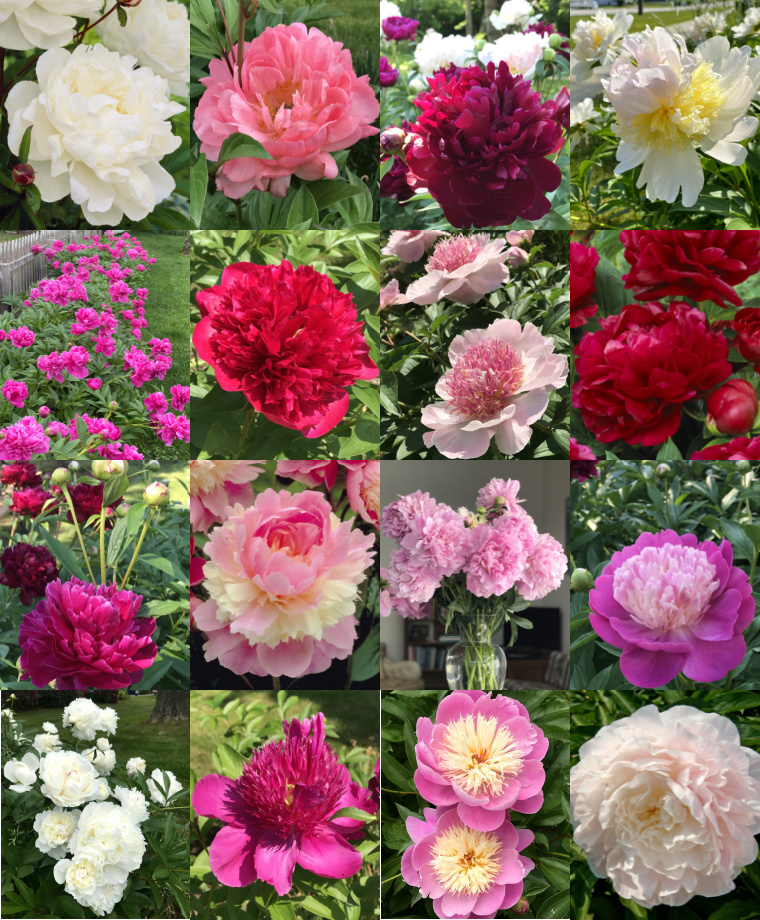
 One of the most abundant, fragrant and prized of all display and cutting flowers, Herbaceous Peonies are incredibly easy to grow~their beautiful, lush flowers appear every spring without the slightest bit of coaxing. They are low maintenance, prolific and deer-resistant.
One of the most abundant, fragrant and prized of all display and cutting flowers, Herbaceous Peonies are incredibly easy to grow~their beautiful, lush flowers appear every spring without the slightest bit of coaxing. They are low maintenance, prolific and deer-resistant.
The only real requirement of Herbaceous Peonies is prolonged cold winter temperature to initiate flower production and to be planted shallow, with only 2” of soil over the top of the rootstock. Hardy from horticultural zones 4 through 8, we advise planting, moving or dividing Peony rootstocks in the fall, so the roots have time to develop and store nutrients before winter. Fall planting is important from a horticultural perspective, and bareroot, fall-planted Peonies are also much less expensive than the containerized plants available in the spring. See Peony Horticultural Tips for a thorough review.
Troubleshooting
Although rare, failure to bloom is usually due to rootstock crowns being planted too deeply. Failure to thrive can be caused by too much shade, poor water drainage, an overcrowded planting site, or a late spring killing frost (buds would look desiccated). If the Peony crown was planted too deeply, dig up the rootball in the fall and rework the soil. Replant the rootball ½ inch higher than the soil level. Water and mulch well: the crown should settle down to soil level. Double varieties may bloom as semi-doubles the first year depending on the weather, with more fully double flowers developing as the plants mature.
Bud blast is when Peony flower buds fail to open. This usually is caused by nutrient-poor soil, too-deep planting, immature root system development, too much shade and weather damage from winter temperature spiking and/or late spring killing frosts that have stressed out the plants.
If you find Peony foliage or flowers have become disfigured or discolored, particularly after periods of cool, rainy weather, the plants may have developed a fungal disease. Our Peony rootstocks are 100% clean, healthy and free of fungal spores. Peonies are susceptible to fungal disease due to planting site conditions. Fungal diseases are soil borne or air borne, particularly in planting sites with overly wet or humid conditions, overcrowding or inadequate maintenance. To avoid fungal disease, maintain good garden maintenance, air circulation and water drainage in the garden.
The most common fungal disease is botrytis blight that overwinters in dead leaves and stems and is common in cool, damp conditions and/or in overly crowded or unkempt gardens. It is critical to cut Peony plants back in the fall to just 2" above soil level, and to remove all cuttings from the garden and destroy them (never add them to the compost pile). Botrytis blight can cause shoots and flowers to turn gray-brown, soften and rot. Botrytis spores can appear on leaves and stems. Mature stems can rot at the crown base. Diseased plants should be dug up and destroyed.
Other fungal diseases include Peony Blotch, also known as Peony Measles, evidenced by purple-brown spots on the foliage. Powdery Mildew produces a superficial pale gray powder on foliage, stems and flowers. Fungal leaf spot or blight causes brown blotches on leaves or flowers. If insects appear to be damaging Peony plants, wash the foliage with garden-safe insecticidal soap. Contact a good local garden center or your Agricultural Extension Service to find out what type of fungicide is safe and permitted in your state.
Pictured, left to right, top to bottom: Peonies Gardenia, Pink Hawaiian Coral, Riches and Fame, Top Brass, Riches and Fame, Red Charm, Do Tell, Henry Bockstoce, Riches and Fame, Sorbet, Koningen Wilhelmina, Lady Liberty, Festiva Maxima, Purple Spider, Bowl of Beauty and Moonstone.







